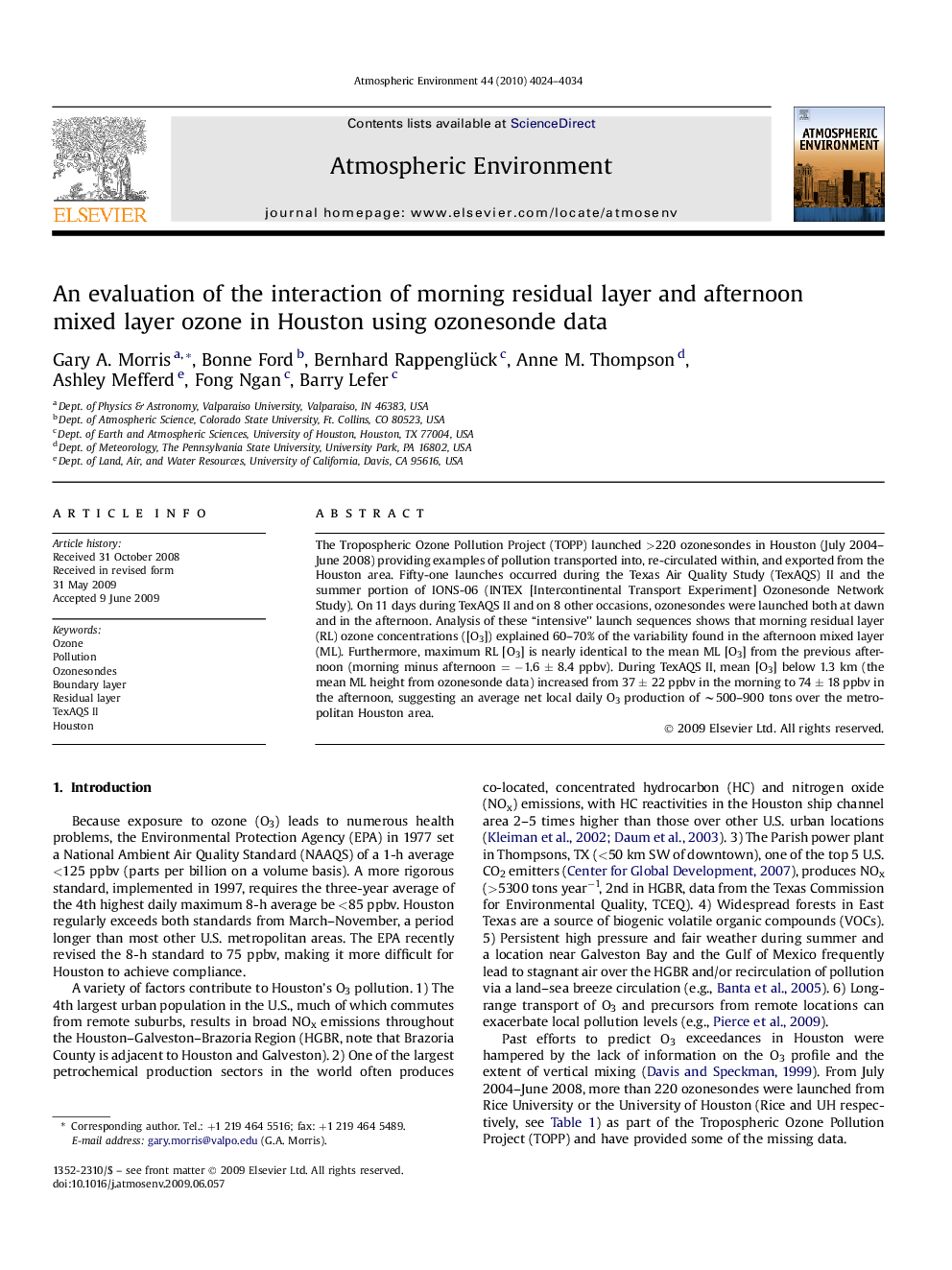| Article ID | Journal | Published Year | Pages | File Type |
|---|---|---|---|---|
| 4440591 | Atmospheric Environment | 2010 | 11 Pages |
The Tropospheric Ozone Pollution Project (TOPP) launched >220 ozonesondes in Houston (July 2004–June 2008) providing examples of pollution transported into, re-circulated within, and exported from the Houston area. Fifty-one launches occurred during the Texas Air Quality Study (TexAQS) II and the summer portion of IONS-06 (INTEX [Intercontinental Transport Experiment] Ozonesonde Network Study). On 11 days during TexAQS II and on 8 other occasions, ozonesondes were launched both at dawn and in the afternoon. Analysis of these “intensive” launch sequences shows that morning residual layer (RL) ozone concentrations ([O3]) explained 60–70% of the variability found in the afternoon mixed layer (ML). Furthermore, maximum RL [O3] is nearly identical to the mean ML [O3] from the previous afternoon (morning minus afternoon = −1.6 ± 8.4 ppbv). During TexAQS II, mean [O3] below 1.3 km (the mean ML height from ozonesonde data) increased from 37 ± 22 ppbv in the morning to 74 ± 18 ppbv in the afternoon, suggesting an average net local daily O3 production of ∼500–900 tons over the metropolitan Houston area.
